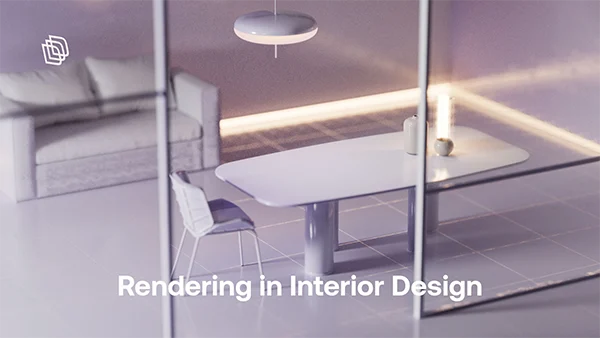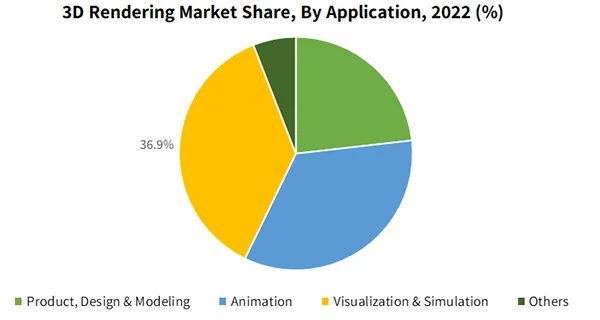
Efficiency is the key in the world of interior design and architectural visualization. Thus, the creation of internal renders quickly makes the difference. With the evolution of technology, professionals working in this field are getting their hands on various tools and strategies.
This guide is elaborated for designers. They can learn how to streamline their interior rendering workflow by choosing the right hardware and software.
For instance, Yousee.studio, is one of the leading studios in the industry. With its exceptional solutions, designers can enhance their rendering efficiency.
The Evolution of Interior Rendering
Before highlighting tools and strategies let’s start by knowing a little bit about the evolution of interior rendering. Please take a moment to appreciate how far this field has come.
Nonetheless, there are a few major noteworthy differences between traditional and contemporary practices.
One of them is, that past interior rendering was a time-consuming and labor-intensive process whereas nowadays advancements in computer technology involve hand-drawn sketches and physical models.
Interesting Fact
According to the latest study, 35% of interior designers own their own businesses.
A Brief History
While talking about its history, interior rendering has a rich history. In the past, architects utilized basic drawings and scale models back then to visualize their creations. Further, during the Renaissance period, they witnessed the emergence of more detailed architectural illustrations. And, in this contemporary era, they are relying on powerful tools and software programs.
Choosing the Right Software
Choosing the right step is a foundational step. Here are some popular choices:
1. SketchUp
SketchUp is well-known and mostly adored by beginners and architects for its user-friendly interface and versatility. Its 3D Warehouse library includes a collection of models.
2. Blender
It is an open-source 3D creation suite that offers a range of modeling tools and a supportive community. It is considered perfect for those looking for a cost-effective solution.
3. Autodesk 3ds Max
A professional-grade software that is widely used in the architecture and interior design industries. It is suitable for high-quality rendering due to its robust modeling and rendering capabilities.
4. Lumion
Lumion is known for its specialization in stunning visualizations and real-time rendering. Perfectly suitable for curious architects and designers out there who require instant feedback.

As you can see, visualization and simulation came to the forefront while analyzing the 3D rendering market size.
Maximizing Hardware Performance
Right software programs ensure your hardware is capable of handling complex demands. Computer setups noted below can boost the workflow:
Invest in a High-Performance CPU
CPU is believed to be the heart of a computer which plays a significant role in speed so get a multi-core processor with a high clock speed for optimal performance.
Load Up on RAM
RAM is responsible for storing data actively. Expanded RAM allows smoother multitasking and handling of large files efficiently.
Get a Powerful Graphics Card (GPU)
A powerful graphics card can accelerate rendering tasks while exploring software that supports it. Simply get a GPU with plenty of VRAM.
Utilize SSD Storage
Solid-state drives (SSDs) are a much and reliable option than traditional HDDs. Using them for operating systems can reduce loading times.
Time-Saving Techniques

Efficiency is not solely dependent on having the right tools, in fact, it’s about how you use them. The implementation of time-saving techniques can substantially impact the workflow:
Asset Libraries
The freedom to frequently use 3D models, textures, and materials can save a lot of time. This is possible by its furniture, fixtures, or foliage, and readily available asset collection that efficiently streamlines projects.
Do You Know? The market size of 3D rendering has surpassed USD 3 billion in 2022. Further, it is expected to expand at more than 20% CAGR from 2023 to 2032.
Templates and Presets
Rendering software programs permit users to create scene templates and presets with the help of lighting setups, camera angles, and render settings included in it. Rendering such readily available templates can result in a massive time-changer.
Batch Rendering
Designers with multiple views or scenes to render always consider using the batch rendering feature. It is because it allows them to queue up numerous renders and let the computer process them subsequently. Which meant they could focus on other tasks.
Render Farms
They are responsible for amping up rendering durations for large-scale projects especially when time is of the essence. Render farms distribute tasks across multiple computers which consequently reduces the time required for complex scenes.
Collaborative Tools
Right collaborative tools contour communications and project management. See how it does:
Cloud-Based File Sharing
Project files stored on cloud-based platforms like Google Drive or Dropbox ensure accessibility amongst members and collaboration in real-time.
Project Management Software
Project management software tools like Asana, Trello, or Monday.com help you manage chores, track progression, and communicate with team members effectively.
Virtual Reality (VR) Collaboration
Virtual Reality allows an immersive collaboration that lets clients and team members virtually walk through interior spaces.
The Future of Interior Rendering
The Future of Interior Rendering looks promising due to the advancements in technology. This field is witnessing rapid growth from real-time ray tracing to artificial intelligence-driven design assistance. Staying updated with emerging trends and technologies further enhances one’s ability to enhance efficiency and creativity.
Conclusion
Efficiency in interior rendering can be achieved with the combination of the correct software and hardware, executing time-saving strategies, and operating collaborative tools. However, as the industry evolves, so should your workflow.







